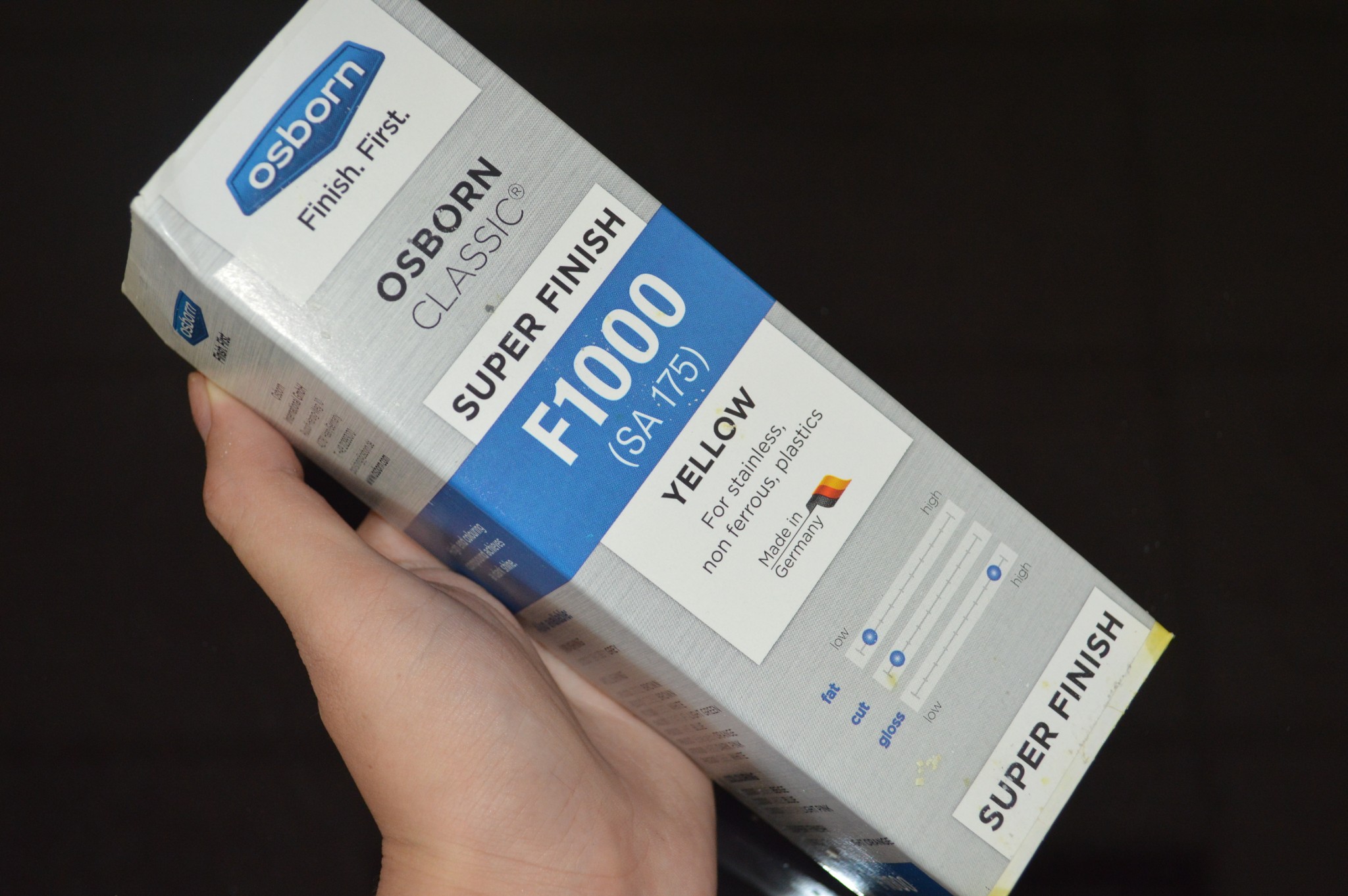What happened to the 20675 images from the op?
(...)
I am a big fan of OSBORN-made polishing compounds, they are afaik all
manufactured in Haan (gemani). A year ago the company streamlined their selection (and naming) of the top-selling
industrial use polishing compounds (i.e. the UNIPOL and LANGSOL product lines, not DIALUX), calling it now "Osborn Classic Compounds":
I find the classification/comparison chart on
page 12/20 very informative, helpful, and
consistent.
That pdf heavily promotes the BROWN/WHITE/BLUE combo for end-users ("DIY") and the stuff can be had for cheap, unbranded, from various trading companies (e.g.
kwb). I have extensive experience with the WHITE and BLUE compounds, here my review:
- kwb BROWN (id. Osborn P1000, fat4 cut8 gloss4; formerly Unipol 7012) — no experience
- kwb WHITE (id. Osborn P3000, fat6 cut8 gloss4; formerly Unipol 5333) — comparatively(!) softish consistency; so crazy fast-cutting and wonderful a compound that Osborn recommends it for cutting AND for polishing depending on carrier lol (see page 8/20); can remove microscratch-leftovers from previous 3000grit+ stone grinding stage but not suitable against macroscratches; manual PTS-polishing for hours and with considerable pressure will not lead to micropitting hooray (but felt-polishing with dremel will!); could be used to get rid of early stage micropitting from subsequent stages; serves great as 'reset stage' to come back to in a failsafe straight-forward manner (as long as you don't use a dremel); coming off any grinding stone (say 302UF) this is a "must-do-first" compound step to make all uni-directional grinding scratches vanish and even out/round off minimal angle transitions of mistake-facets (i.e. previous grinding errors); circular polishing motions with PTS recommended; when the last uni-directional grinding scratches are gone, it's time for the next step (kwb BLUE); compound leaves a sharp semi-bright mirror finish and makes deeper grinding scratches stand out (at which point the perfectionist would consider going 1 step back on the stones and regrind the area containing those few scratches); also works great for stropping with the PTS method albeit too fast-cutting on thinner blade stocks ojo.
- kwb BLUE (id. Osborn C2000, fat2 cut3 gloss8; formerly Unipol 462) — hard consistency but applies with a oil droplet as easily on a PTS, so no big deal; imho cuts very fast too (as seen in my thread on the PTS method for guided stropping); brightens the P3000 gloss4-finish within seconds(!) of manual PTS-polishing; one should use a different carrier e.g. cotton or microfibre or Notiflex Fleece Soft because the remaining circular nanoscratches could originate from the Paper Tape itself, who knows; however overpolishing (parameters: speed, time, pressure, heat, carrier, compound, steel) with this compound on any carrier will lead to micropitting which reduces the sharpness of the mirror reflection; apart from phenomenal defects like micropitting and Paper Tape(?) nanoscratches, the gloss effect is very much mirror-like. C2000 enables an impressively fast path to mirror finish but one must be aware of balancing around the pitfalls pun intended. also works great for stropping with the PTS method or deburring with paint stirring wood staffs.

- If you and i can't produce a 100%-fully treated C2000 finish which is really micropitting-free, we shouldn't look into the next step to our "perfect mirror finish" goal, namely the super-finishing step. So, given how challenging it is for the DIY user to avoid micropitting and how (presumably) slow-cutting and hard the super-finishing compounds are, we should be safe to ignore the Osborn F1000 and Osborn F2000 compounds, what do think? Anyway, the Osborn super-finishing compounds (F1000, F2000) and the MERARD super-finishing compounds (ORAS, HR30) aren't expensive, around 10 bucks a pop if you can find availabilities. Makes you wonder how the companies make money with such highly specialized stuff lol.
Currently i am working on a Techno blade faces mirror polishing project. Treating the face with C2000 for a "few seconds" only feels too short a time. I am really at a loss re how exactly to re-proceed, trial and error problem. Completing a 100%-fully treated P3000-PTS-finish is, fortunately, absolutely straight-forward, with nothing to fear, with no surprises. But going much further than that, improving the mirror finish in every regard, becomes a super challenging and frustrating balancing act, an act of compromises. Maybe the best advice is to simply cut the losses,
finish prematurely and move on.


